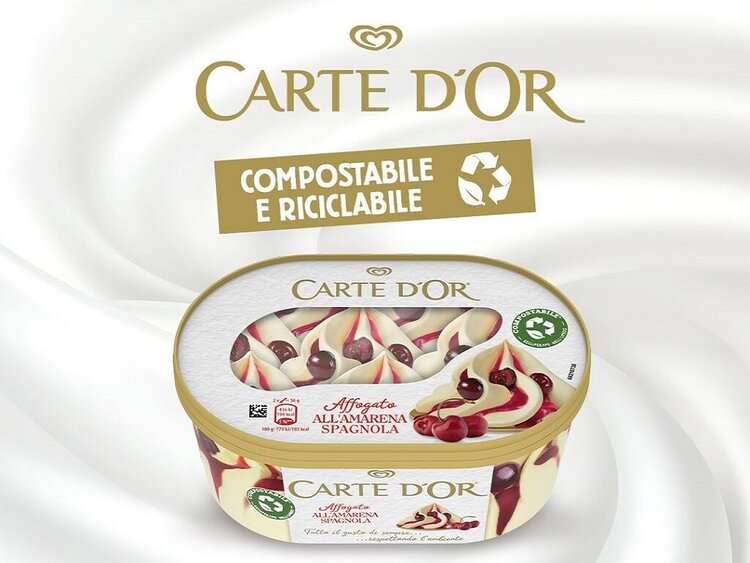Packaging plays an integral role in the safe transit and preservation of frozen food and is an area that has seen a lot of technological innovation over the last decade. And further development is ever ongoing.
The Plastics Packaging Tax, introduced by the British Government last year, imposes charges on businesses that use plastic packaging which doesn’t include 30% or more recycled content. As of April 1, 2023 the tax was set at £210.82 per ton. This has resulted in companies that use plastic in their primary or secondary transit of packaging attempting to reduce the tonnage they use or swap to more expensive recycled content packaging.
Frozen food brands try to mitigate their environmental impact and minimize costs by using recycled materials for packaging. However, it is difficult to get food-grade recycled plastic, which must be made from >99% food contact raw material.
According to the British Frozen Food Federation (BFFF), for this to be produced in the UK, a technically and commercially viable automated solution is needed to separate packaging that has been used with food from that which has not.
Practical Issues
In addition to clearly communicating what’s inside, frozen food packaging has to serve a number of practical purposes, such as protecting the product from spoilage and moisture. It must also be easy to fill, seal and store, and be made from food-grade substrates that are resistant to grease, oil and water.
“Frozen food packaging is typically made from durable, insulating materials to withstand extreme cold temperatures,” explained Paul Jenkins, managing director of ThePackHub. “The contents require a hermetic seal to prevent freezer burn and needs a high resistance to moisture. The packaging is also usually designed to be tear and puncture-resistant.”

Jenkins added: “Graphics and labels for frozen food products are usually different to ambient and chilled as they need to work extra hard in frosty supermarket freezer cabinets as well as be vibrant and legible in the frosty conditions of the consumer’s freezer compartment. The front of pack also often emphasizes the convenience of preparation of the frozen product.”
Frozen food products can expand up to 9% during the freezing process, so packaging materials have to be strong and flexible enough to accommodate this.
“Arguably the most difficult criteria to fulfill, and one which will become increasingly important in the coming years, is that it must be sustainable,” said Rupert Ashby, BFFF’s chief executive. “Frozen food packaging often includes cardboard, laminated paper and flexible and rigid plastic materials, but each comes with its own sustainability challenge.”

Shrink film, for example, is one of the most popular types of frozen food packaging and is usually made from polyethylene, polyolefin or polyvinyl chloride. Although it is technically possible to recycle them, the collection separation and reprocessing of household plastic film is not widely available in the United Kingdom. In fact, according to Statista, only 67 local authorities in country provided kerbside collections of films out of 391 in 2017. Furthermore, other types of flexible plastic packaging, such as laminated pouches and bags, are not currently recycled at all in the UK.
“Cardboard is another commonly used frozen packaging material, and a deceptively innocent one in terms of recycling,” said Ashby. “However, frozen food boxes are required to have a coating of plastic to protect them from low temperatures. As is generally the case with mixed-materials packaging, individually the materials used to make frozen food boxes are recyclable, but they are layered in such a way that it is difficult to separate them during the recycling process.”
Wax-coated cardboard is another mixed material packaging product that is difficult to recycle. Microwave-friendly plastic trays can also be problematic as they are often black – a color that can’t be identified by automatic sorting machines. As a result, they often end up in the landfill.
The vast majority of frozen food packaging innovations have centered around sustainability, making use of materials like recyclable paperboard and/or packaging with recycled content.
According to ThePackHub, the use of bioplastics is also an area of notable development, while “paperization” – switching from plastic to fiber-based materials – is also an area of growth. Another ongoing trend includes “light weighting” to reduce material usage, but not at the expense of functionality. Finally, reusable packaging across all food categories is having an impact on packaging developments.

“Some recent examples from ThePackHub’s Innovation Zone platform include General Mills’ thermochromic packaging for its Yoplait Go-GURT Freeze to Reveal product to engage younger consumers,” said Jenkins. “The temperature-sensitive inks on the packaging reveal hidden graphics and text themed around ‘ice’ and ‘frozen,’ only when the 2-oz (59 ml) tubes are frozen.”
Subic, a Saudi Arabian chemical company, has collaborated with Estiko Packaging Solutions and Coldwater Prawns of Norway to create a sustainable packaging pouch for frozen prawns, featuring a multi-layer film with around 60% ocean-bound plastic (OBP) content (pictured at the top of this story). It’s produced by Estiko using Sabic’s circular certified PP Qrystal polymer grade.
Meanwhile, Unilever has partnered with Seda Packaging Group and Stora Enso to create recyclable and compostable paperboard packaging for Carte d’Or ice cream in Italy. The tub features a biodegradable barrier coating, making it waterproof and suitable for storing ice cream. The material used is lighter than previous containers, can be either recycled or composted, and allows consumers to see the contents through the lid.

“Environmental considerations in frozen food packaging have become increasingly important due to regulatory pressures and a heightened corporate acknowledgement of the global climate crisis,” stated Jenkins. “Frozen food companies that invest in sustainable packaging practices not only comply with emerging regulations, but also enhance their brand image with the potential for a competitive advantage in the market. The necessity for sustainable packaging is further boosted by consumers who are actively seeking and demanding more sustainable packaging solutions.”





